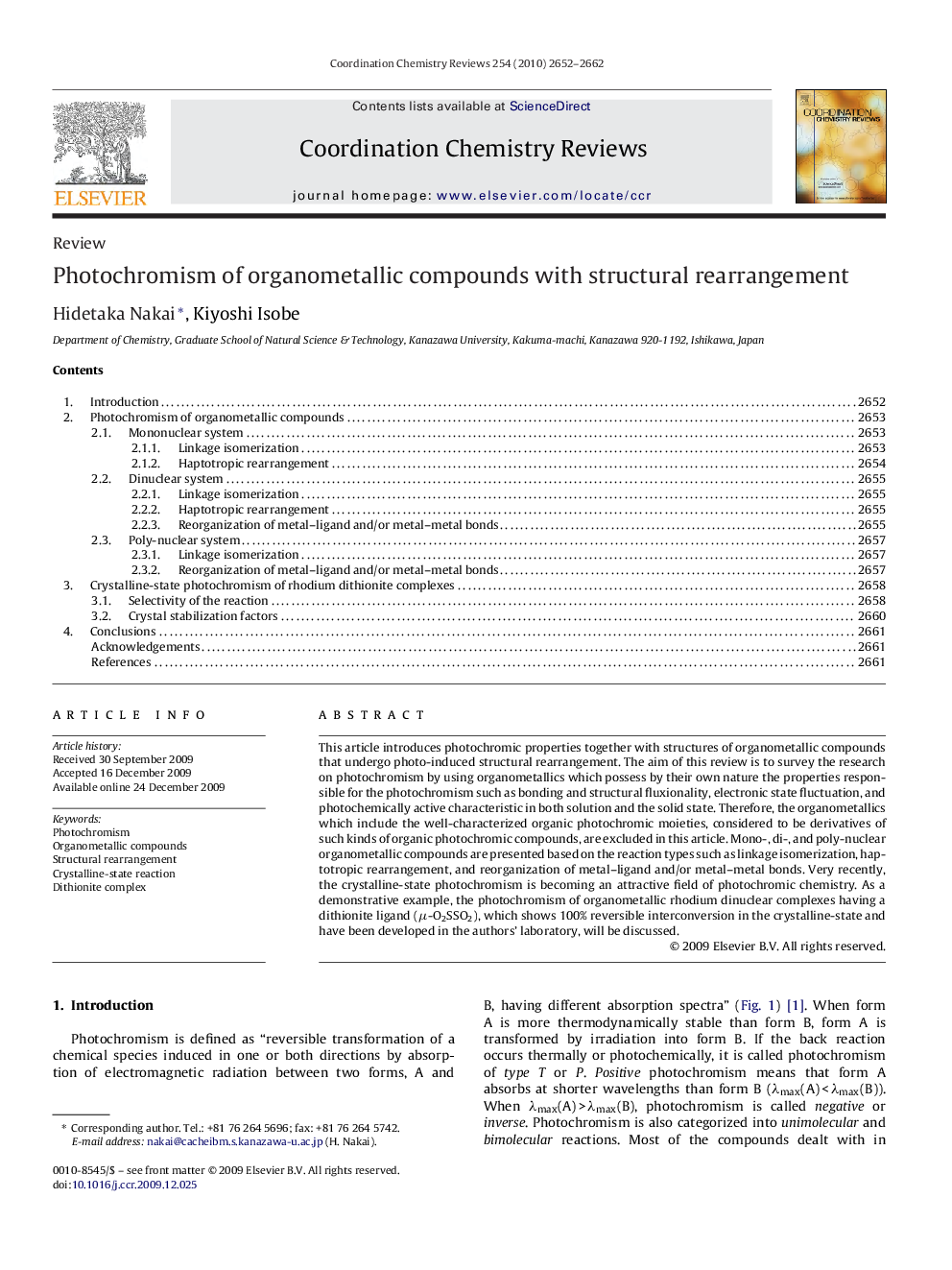| Article ID | Journal | Published Year | Pages | File Type |
|---|---|---|---|---|
| 1299816 | Coordination Chemistry Reviews | 2010 | 11 Pages |
This article introduces photochromic properties together with structures of organometallic compounds that undergo photo-induced structural rearrangement. The aim of this review is to survey the research on photochromism by using organometallics which possess by their own nature the properties responsible for the photochromism such as bonding and structural fluxionality, electronic state fluctuation, and photochemically active characteristic in both solution and the solid state. Therefore, the organometallics which include the well-characterized organic photochromic moieties, considered to be derivatives of such kinds of organic photochromic compounds, are excluded in this article. Mono-, di-, and poly-nuclear organometallic compounds are presented based on the reaction types such as linkage isomerization, haptotropic rearrangement, and reorganization of metal–ligand and/or metal–metal bonds. Very recently, the crystalline-state photochromism is becoming an attractive field of photochromic chemistry. As a demonstrative example, the photochromism of organometallic rhodium dinuclear complexes having a dithionite ligand (μ-O2SSO2), which shows 100% reversible interconversion in the crystalline-state and have been developed in the authors’ laboratory, will be discussed.
